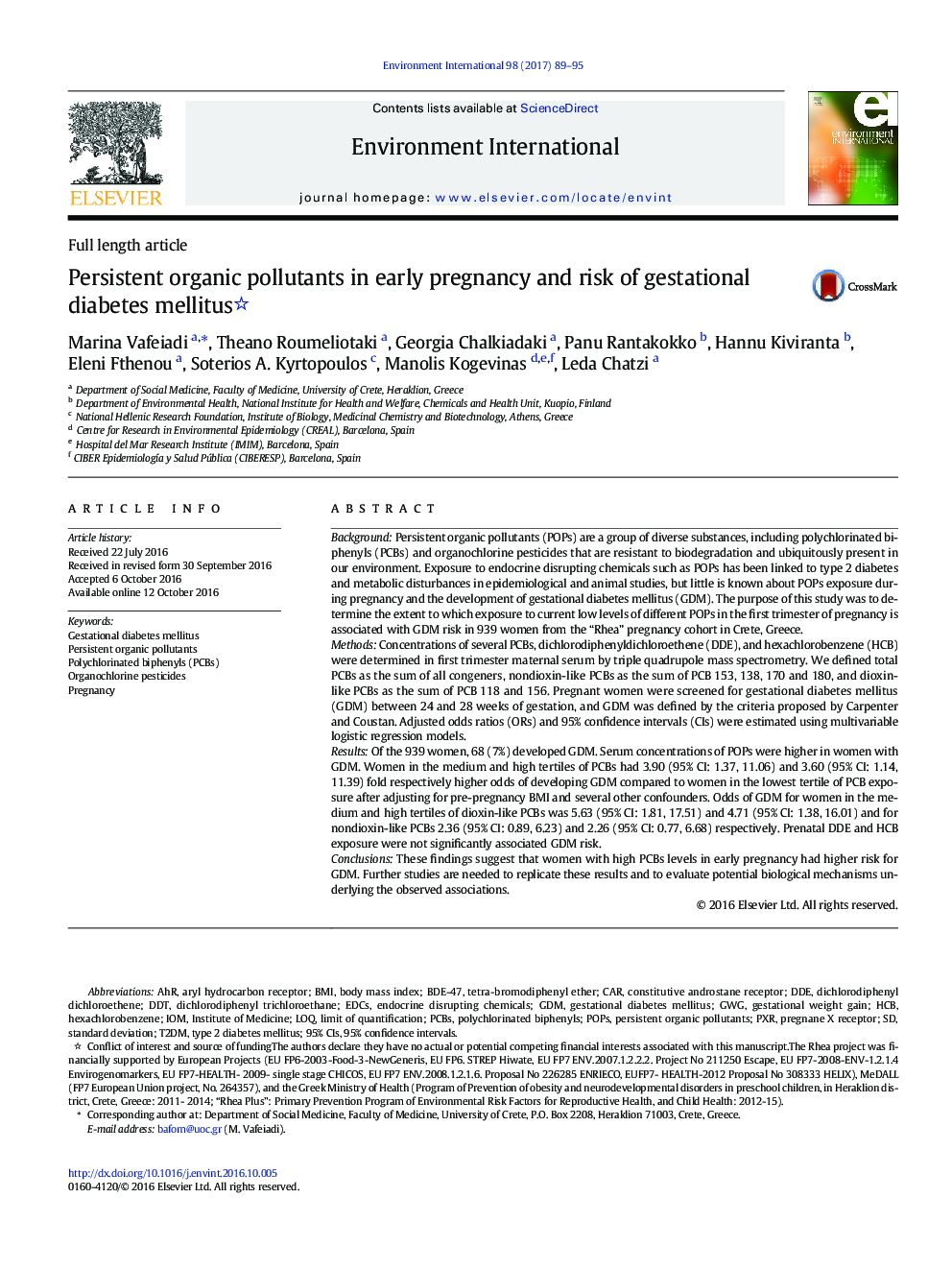| کد مقاله | کد نشریه | سال انتشار | مقاله انگلیسی | نسخه تمام متن |
|---|---|---|---|---|
| 5748459 | 1619032 | 2017 | 7 صفحه PDF | دانلود رایگان |
- Exposure to environmental pollutants has been linked to type 2 diabetes.
- Environmental chemicals may be associated with glucose disorders during pregnancy.
- We explored effects of exposure to POPs on the development of gestational diabetes.
- Exposure to PCBs during pregnancy was associated with increased risk for GDM.
- DDE and HCB exposure was not significantly associated GDM risk.
BackgroundPersistent organic pollutants (POPs) are a group of diverse substances, including polychlorinated biphenyls (PCBs) and organochlorine pesticides that are resistant to biodegradation and ubiquitously present in our environment. Exposure to endocrine disrupting chemicals such as POPs has been linked to type 2 diabetes and metabolic disturbances in epidemiological and animal studies, but little is known about POPs exposure during pregnancy and the development of gestational diabetes mellitus (GDM). The purpose of this study was to determine the extent to which exposure to current low levels of different POPs in the first trimester of pregnancy is associated with GDM risk in 939 women from the “Rhea” pregnancy cohort in Crete, Greece.MethodsConcentrations of several PCBs, dichlorodiphenyldichloroethene (DDE), and hexachlorobenzene (HCB) were determined in first trimester maternal serum by triple quadrupole mass spectrometry. We defined total PCBs as the sum of all congeners, nondioxin-like PCBs as the sum of PCB 153, 138, 170 and 180, and dioxin-like PCBs as the sum of PCB 118 and 156. Pregnant women were screened for gestational diabetes mellitus (GDM) between 24 and 28Â weeks of gestation, and GDM was defined by the criteria proposed by Carpenter and Coustan. Adjusted odds ratios (ORs) and 95% confidence intervals (CIs) were estimated using multivariable logistic regression models.ResultsOf the 939 women, 68 (7%) developed GDM. Serum concentrations of POPs were higher in women with GDM. Women in the medium and high tertiles of PCBs had 3.90 (95% CI: 1.37, 11.06) and 3.60 (95% CI: 1.14, 11.39) fold respectively higher odds of developing GDM compared to women in the lowest tertile of PCB exposure after adjusting for pre-pregnancy BMI and several other confounders. Odds of GDM for women in the medium and high tertiles of dioxin-like PCBs was 5.63 (95% CI: 1.81, 17.51) and 4.71 (95% CI: 1.38, 16.01) and for nondioxin-like PCBs 2.36 (95% CI: 0.89, 6.23) and 2.26 (95% CI: 0.77, 6.68) respectively. Prenatal DDE and HCB exposure were not significantly associated GDM risk.ConclusionsThese findings suggest that women with high PCBs levels in early pregnancy had higher risk for GDM. Further studies are needed to replicate these results and to evaluate potential biological mechanisms underlying the observed associations.
Journal: Environment International - Volume 98, January 2017, Pages 89-95
